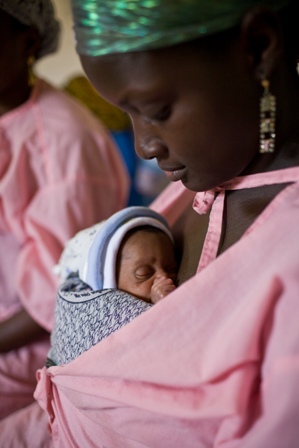

Like most moms, I love remembering my children's firsts. Their first steps, first words, first day at school. But, one first I didn't realize was a milestone at the time was the day each of my kids completed the first month of life.
I later learned that, around the world, that first month is the most dangerous time of a child's life. Infections, premature births and childbirth complications are the leading causes of newborn deaths, but they are highly preventable through basic health care, such as antibiotics, breastfeeding support and improved hygiene.
 Still, every year, more than 3 million babies die before they turn one month old. Thankfully, that number is dropping, but not nearly as fast as more successful efforts to end deaths to older children and mothers.
Still, every year, more than 3 million babies die before they turn one month old. Thankfully, that number is dropping, but not nearly as fast as more successful efforts to end deaths to older children and mothers.
That's because global health efforts haven't quite caught up with what we now know works to save newborn babies. So, although newborn deaths now account for more than 40 percent of child deaths, they are mentioned by only 6 percent of the world's official development assistance programs for maternal, newborn and child health. Only 0.1 percent of these programs target newborn babies exclusively. That must change.
This mismatch of funding and need is one of the major findings of Save the Children's new report, "A Decade of Change for Newborn Survival." A collaboration of 150 global experts and supported by the Bill & Melinda Gates Foundation, the report shows that efforts to make basic lifesaving care available to families in poor communities work. Countries like Bangladesh, Nepal and Malawi have substantially cut newborn death rates, and have lessons to share with many other countries.
One of the most effective methods is Kangaroo Mother Care. When mothers wrap their newborns to their skin, premature babies get the warmth and better access to breastfeeding that can save their lives. Sharing this method with communities where families have limited access to hospitals, high-tech equipment -- or even electricity -- could save hundreds of thousands of babies a year.
That kind of care doesn't take a lot of money, but it does take political will.
That's why this week's "Child Survival Call to Action" in Washington, D.C., is so exciting. This high-level forum co-hosted by the U.S., Indian and Ethiopian governments is a chance to express and build the momentum needed to end preventable child deaths.
The United States has been a leader in reducing global deaths to children under 5 years old from 12.4 million in 1990 to 7.6 million in 2010. It's also a leader on targeting newborns, providing double the assistance of the next biggest donor, the World Bank.
To show that you support this kind of leadership, please join Save the Children in calling on world leaders to finish what they started and end preventable child deaths. Sign the petition. Every child deserves a 5th birthday!
